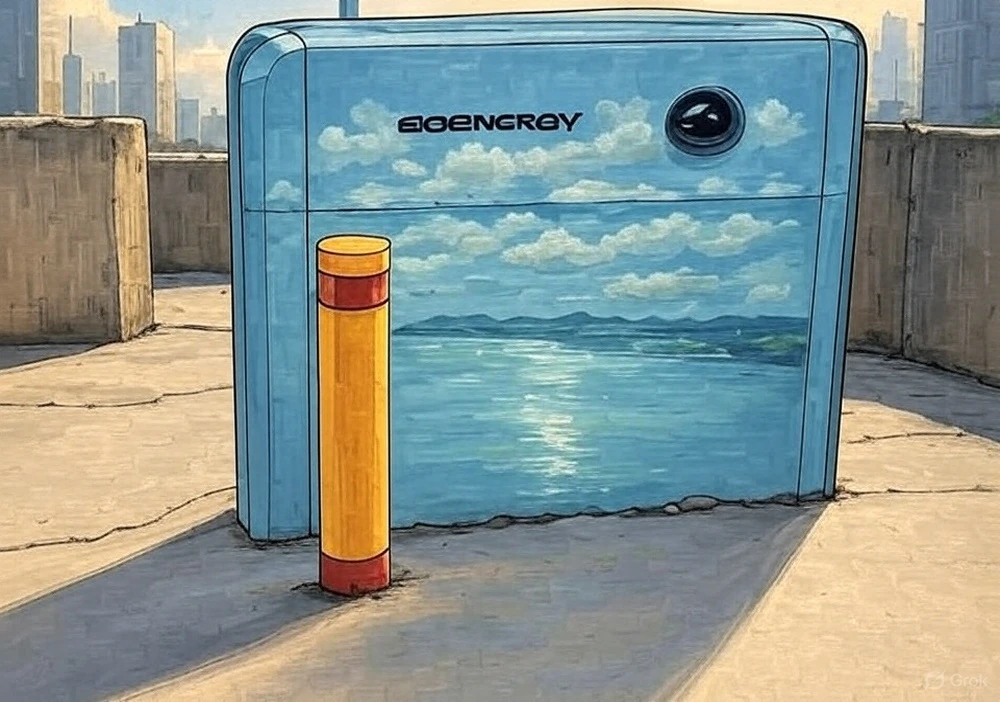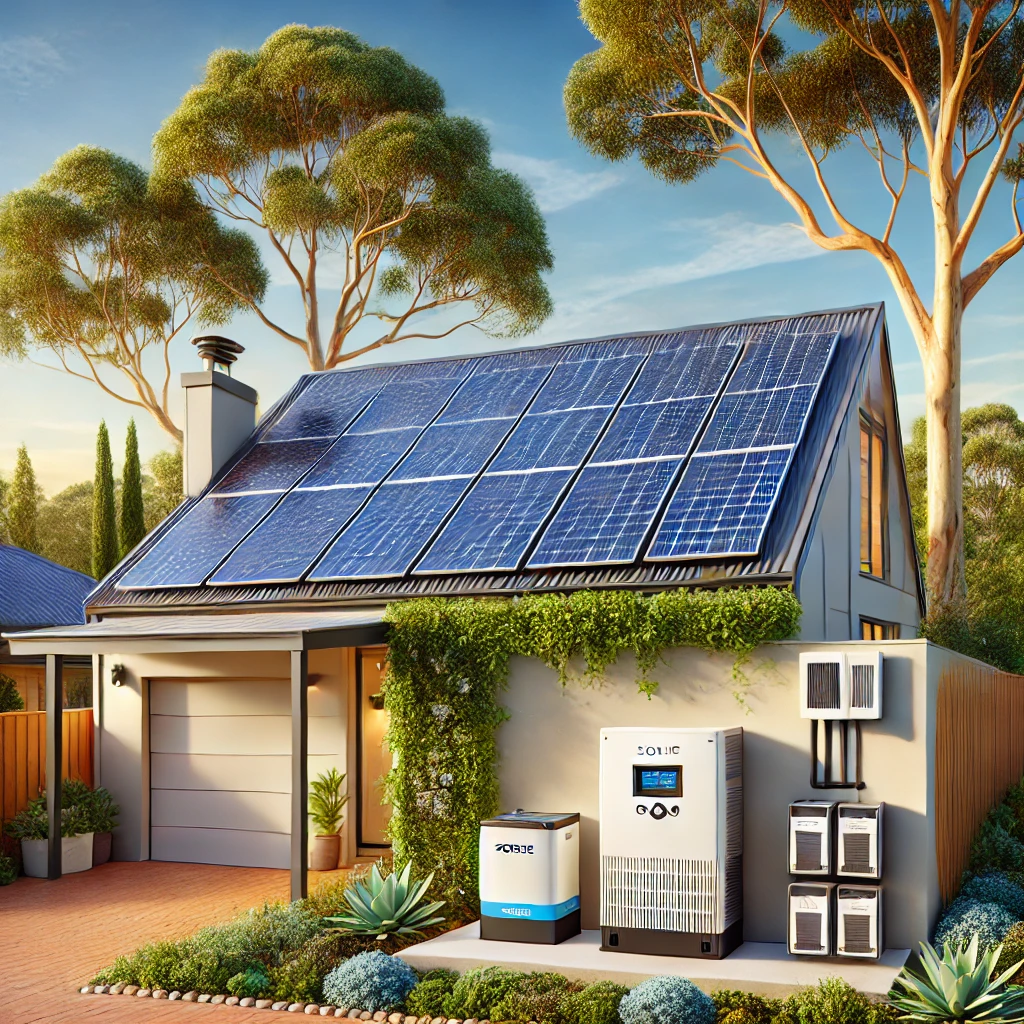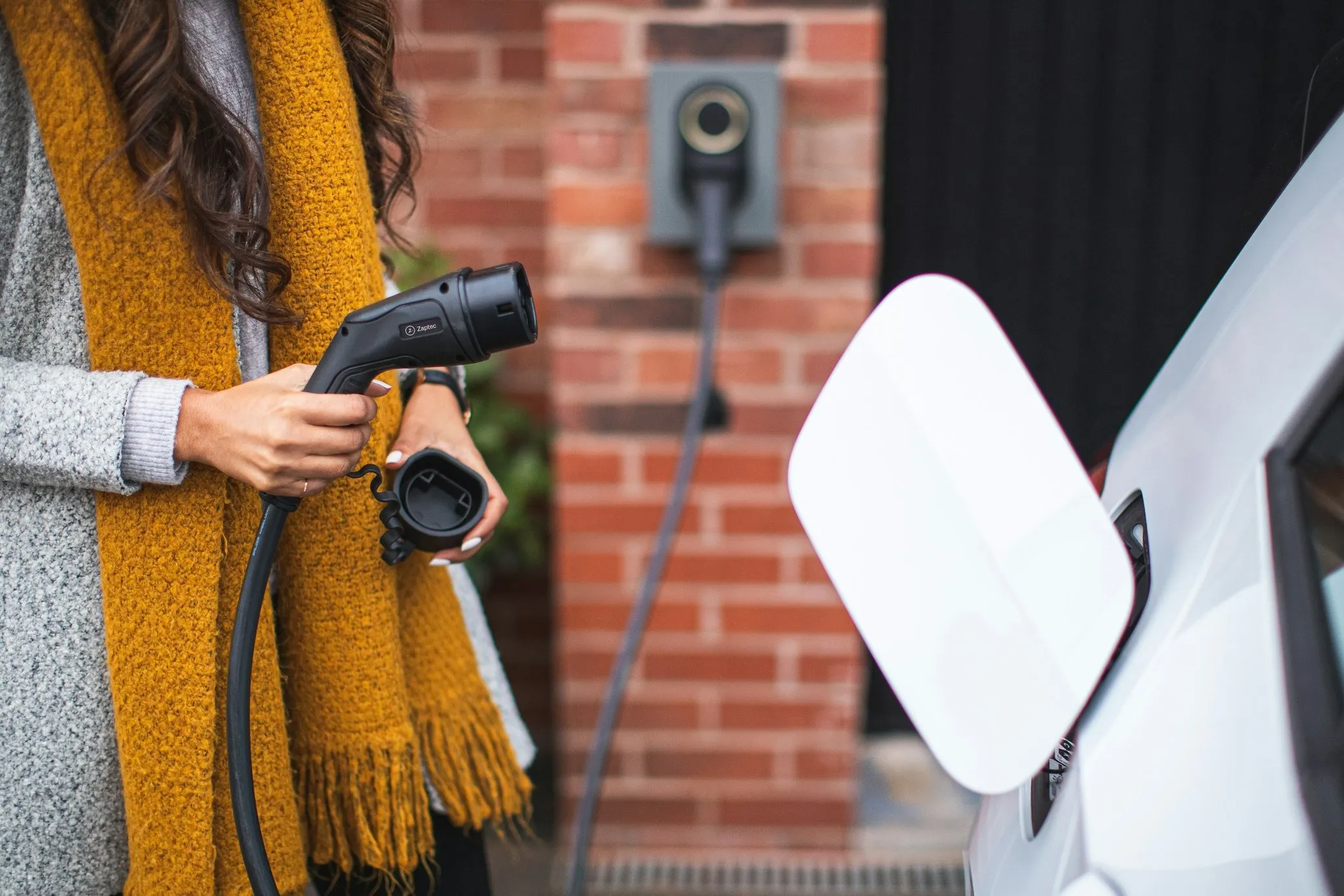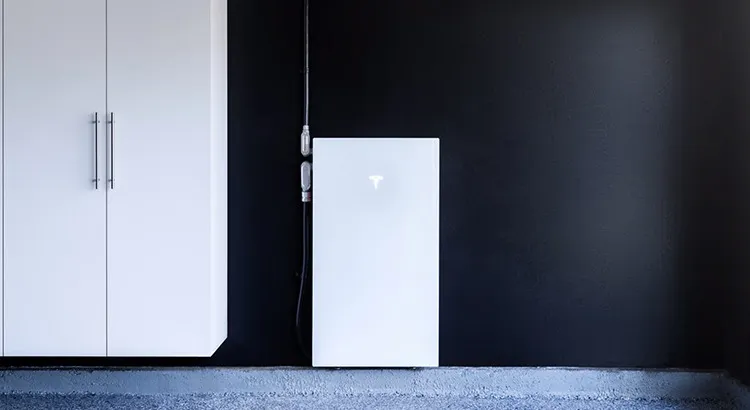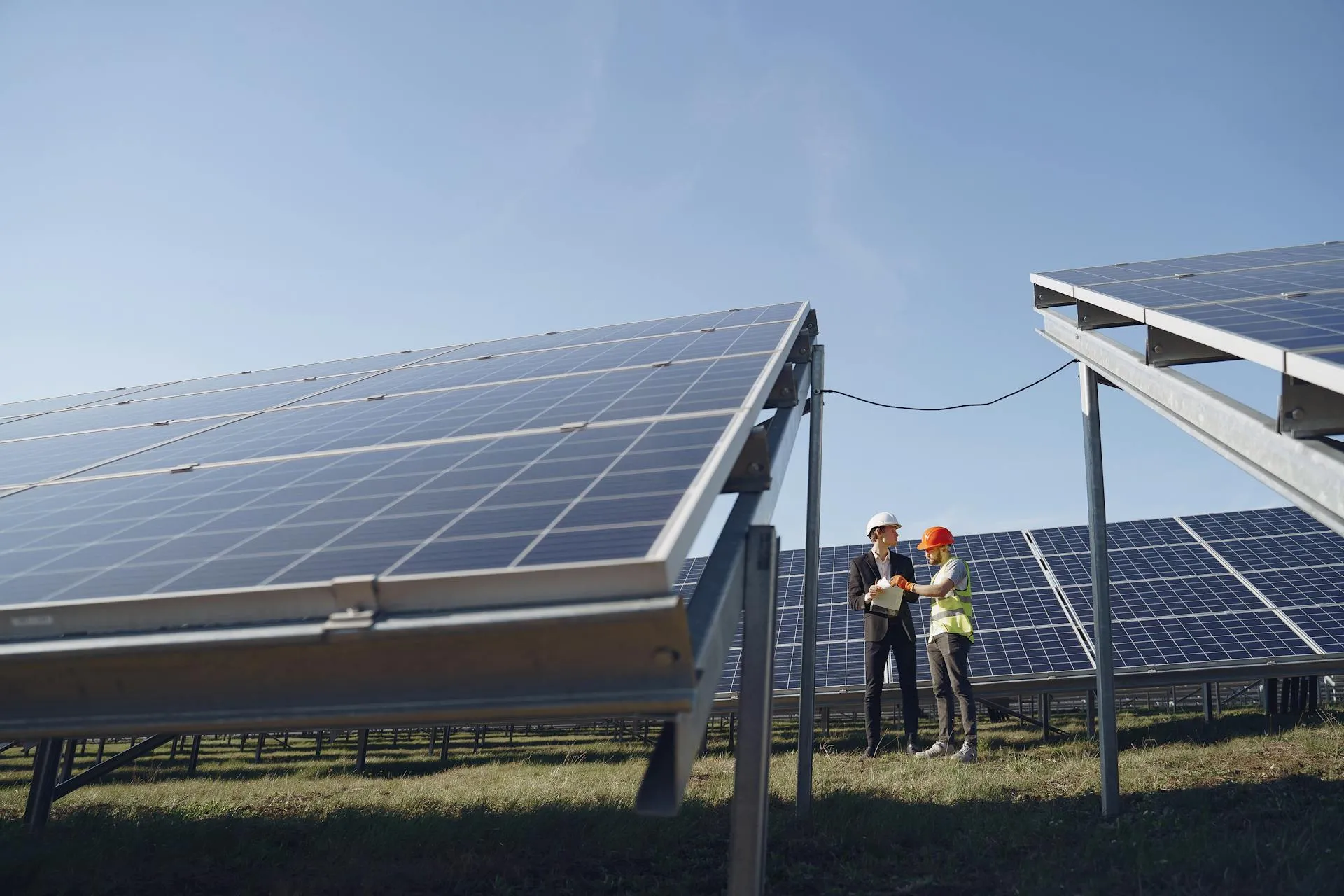
Blog
How Much Do Solar Panels Cost in Australia? (2024 Update)
04 Nov, 2024
Explore the cost of solar panels in Canberra for 2024. Learn about investment benefits, savings, and incentives to decide if solar energy is worth it for your home.
Solar panel prices keep falling while Canberra homeowners struggle with rising electricity costs. The cost of solar panels in Canberra has dropped substantially in the last decade. Renewable energy is now available to more people than ever.
With solar panel installation, Canberra households can slash their energy bills by 50-80%. The exact savings depend on system size and location.
This complete guide covers the current solar panel prices, solar panel installation costs, and what investing in solar means for Canberra households in 2024.
You'll discover government incentives, what affects system costs, and smart ways to get the most from your solar investment. The guide covers price differences between major Canberra cities and everything in choosing the right solar panel system cost and size that matches your energy needs.
Current Solar Panel Costs in Canberra
Canberra solar panel prices vary in a variety of ways based on system capacity, location, and component quality.
Homeowners can make better decisions about their solar investments when they understand these price differences in the price of solar panels.
Average costs by system size
Solar system prices in Canberra vary substantially based on capacity. Most Canberra households find a standard 6.6 kW solar system suitable, which costs between AUD 6,158 and AUD 9,237 after rebates. The current market prices across various system sizes are:
|
System Size |
Price Range (2024) |
| 3kW | AUD 5,388 - 7,697 |
| 5kW | AUD 6,927 - 12,316 |
| 6.6kW | AUD 8,467 - 13,855 |
| 10kW | AUD 12,316 - 20,013 |
Factors Influencing Solar Panel Prices
These factors determine how much your solar installation will cost, especially when considering solar panels for your home:
-
Panel Technology: Monocrystalline panels are more expensive but deliver higher efficiency than polycrystalline and thin-film alternatives.
-
System Type: Grid-tied systems are cheaper than hybrid or stand-alone systems
-
Installation Complexity: Your roof's type, condition, and accessibility affect the labor costs
-
Component Quality: Premium inverters and high-efficiency panels increase the original costs
-
Market Forces: Equipment prices change based on supply, demand, and the Canberra n dollar's value
Also Read: Ultimate Guide To Buy Solar Panels For Your Home
Regional price variations across Canberra n cities
Australian cities show significant differences in solar installation costs. Recent data shows Adelaide and Perth have the best prices, while customers pay more in Darwin and Hobart. Here's what a 6kW system costs in major cities:
| City | Average Cost ( In AUD) |
| Adelaide (SA) | AUD 7,343 |
| Melbourne (VIC) | AUD 8,344 |
| Sydney (NSW) | AUD 8,267 |
| Brisbane (QLD) | AUD 9,021 |
| Perth (WA) | AUD 7,543 |
| Darwin (NT) | AUD 13,917 |
| Hobart (TAS) | AUD 11,223 |
Labor rates, installer availability, and transport expenses create these price differences between regions.
Cities with many installers tend to have better prices due to competition. Remote areas often have higher costs because fewer installers operate there and transportation costs more.
Learn More: How to Buy the Best Solar Inverter: A Comprehensive Guide
Understanding the ROI of Solar Panels
Canberra homeowners must understand the returns and financial benefits to make smart decisions about solar panel investments. Solar energy systems not only contribute to environmental sustainability but also offer significant financial incentives that can make the transition highly rewarding.
Calculating potential energy savings
Solar ROI calculations depend on understanding energy consumption patterns and possible savings. Austrlian households that consume 3,000 kWh per quarter can save substantially by adopting solar power.
The current electricity rates average 35 cents per kWh, and homeowners can lower their quarterly bills from AUD 1,616 to approximately AUD 877 when they install a properly sized solar system.
Several factors affect energy savings:
-
Self-consumption rate (typically 40% of total generation)
-
Feed-in tariff rates (ranging from 5-15 cents per kWh)
-
Daily usage patterns and peak consumption times
-
System efficiency and positioning
Payback period analysis
Solar installation payback periods differ significantly among Austrilan cities. Local electricity rates and solar conditions play a crucial role in determining these periods:
A 6.6kW system with a 50% self-consumption rate at current electricity prices serves as the basis for this graph. Homeowners can achieve shorter payback periods by choosing the right system size and using more solar power during generation hours.
Long-term financial benefits
Solar panels work at peak efficiency for 25+ years and bring remarkable returns over time. A good residential solar system pays for itself several times during its life.
Quality microinverter systems can give you 5-6 complete returns on your investment. Money savings go well beyond cutting your power bills:
-
Average households save around AUD 2,925 yearly
-
Your home stays protected from electricity price hikes
-
Your property value could go up
-
You rely less on grid power
-
Feed-in tariffs bring extra money
Battery storage costs more upfront but can boost these benefits when you use more of your power. Adding a battery might push the payback time to 6-8 years.
Still, you get more independence from the grid and better returns where peak and off-peak prices differ a lot.
ROI calculations should factor in what your upfront money could earn elsewhere. To cite an instance, see an AUD 9,237 system that saves AUD 2,925 each year - that's a 31% return.
This return beats traditional investments by a lot, even after you pay for maintenance and replace inverters when needed.
Government Incentives and Rebates
Austrlia's government shows its steadfast dedication to renewable energy through complete incentive programs that make solar panel installation affordable for homeowners and businesses.
Financial support flows from both federal and state levels to help people switch to solar energy.
Small-scale Renewable Energy Scheme (SRES)
Austrlia goverment offers the SRES as its main federal solar incentive program through Small-scale Technology Certificates (STCs).
Homeowners can save AUD 538.84 per kW installed in 2024, which reduces the cost of a standard 6.6kW system by AUD 3,540.92. The program offers several benefits:
-
Discounts apply automatically at the point of sale
-
Everyone qualifies regardless of income
-
Systems up to 100kW receive coverage
-
Certificate values range between AUD 35-40
Solar installation has become more appealing with the current STC price of AUD 55.42 after fees. Market conditions can affect these values. The program will run until 2030, and benefit amounts decrease each year.
State-specific solar incentives
Austrlian states provide their solar incentives that work alongside the federal SRES program:
| State | Key Incentive Programs | Maximum Benefit |
| Victoria | Solar Homes Program | AUD 2,155.34 |
| NSW | Solar for Low Income | Free 3kW system |
| ACT | Home Energy Support | Up to AUD 3,848.83 |
| NT | Home Battery Scheme | AUD 7,923.96 |
| WA | DEBS Program | Variable FiT rates |
Victoria stands out with its detailed support system that combines rebates and interest-free loans. The ACT's Sustainable Household Scheme helps homeowners with zero-interest loans that cover energy-efficient upgrades and solar installations.
How rebates affect overall costs
Federal and state incentives substantially lower the original investment cost of solar systems. A standard 6.6kW installation costs:
Original Cost: AUD 13,086.01
-
Federal SRES Rebate: AUD 3,540.92
-
State Rebate (varies): AUD 2,155.34 (Victorian example) Final Cost: AUD 7,389.75
These incentives change the financial outlook for people considering solar power. The benefits include:
-
Feed-in tariffs when you export excess energy to the grid
-
Shorter payback periods
-
Higher property value
-
Protection from future electricity price rises
Your location, system size, and installation timing will affect these rebate amounts. The current legislation will gradually reduce federal incentives, which makes early adoption financially smarter.
Most advertised solar system prices already include the federal rebate. However, you'll need to apply separately for state-specific incentives.
Maximizing Your Solar Investment
Smart homeowners achieve better results with their solar energy systems when they understand system requirements and quality factors.
A solar panel installation needs thorough planning and strategic choices that maximize return on investment.
Choosing the right system size
System sizing is the lifeblood of successful solar investments. Several key factors determine the optimal size: Local climate conditions substantially affect system performance. A 6.6 kW system produces:
| Household Size | Daily Usage | Recommended System Size |
| 1-2 people | 20 KWh | 5 kW |
| 3-4 people | 25 kWh | 6.6 kW |
| 4-5 people | 30 kWh | 8 kW |
| 5+ people | 35+ kWh | 10 kW |
Local climate conditions substantially affect system performance. A 6.6 kW system produces:
-
26 kWh daily in Sydney
-
28 kWh daily in Brisbane
-
23 kWh daily in Hobart
Smart future-proofing needs to account for increased electricity usage from:
-
Addition of air conditioning systems
-
Electric vehicle charging requirements
-
Home office setup
-
Conversion from gas to electric appliances
Importance of quality components
Quality components are vital for reliable system performance over time. High-efficiency panels that achieve 20% or higher ratings can convert more sunlight into usable electricity in the same space. These quality components have several distinctive features:
-
Superior Warranty Coverage: Manufacturers provide 15-25 year warranties
-
Certified Performance: Components meet Clean Energy Council standards
-
Advanced Technology: Monocrystalline panels deliver higher efficiency
-
Professional Installation: Accredited installers guarantee proper setup
System performance significantly depends on inverter selection. Available options include:
-
String inverters that provide economical installations
-
Microinverters that maximize panel-level performance
-
Hybrid inverters that make systems battery-ready
-
Power optimizers that improve efficiency
Tips for optimizing solar panel performance
Your system's efficiency depends on proper installation and maintenance. You need to focus on several key factors to optimize performance:
Installation Considerations:
-
Panels must face true north in the Southern Hemisphere
-
The tilt angle should match your location
-
No shade from nearby structures
-
Certified technicians must handle the installation
Maintenance Requirements:
-
Clean panels often to avoid 25-30% power loss
-
Get professional system checks
-
Keep track of available apps
-
Fix performance problems quickly
Usage Optimization:
-
Run power-hungry appliances during peak sun hours
-
Watch your energy usage patterns
-
Use smart home tech to manage power better
-
Add energy storage to improve self-consumption
You need system monitoring to keep performance at its best. Modern solar setups come with monitoring tools that help you:
-
See daily power output
-
Spot problems early
-
Adjust power usage
-
Know your actual savings
Your system will last longer and work better with professional maintenance. Regular checks should look at:
-
Electrical connections
-
Panel surfaces
-
Inverter operation
-
System efficiency
You can optimize performance further with advanced tech solutions like:
-
Maximum power point tracking (MPPT)
-
Smart inverter systems
-
Solar panel tracking systems
-
Energy management systems
Unlock the Benefits of Solar Energy with Solar4Life
Solar panel installation proves to be a smart financial move for canberra homeowners in 2024. Market data and proven returns support this claim. A standard 6.6kW system costs between AUD 6,158 and 9,237, which marks the lowest prices in history. These systems can cut energy bills by 50-80%. The SRES program and state-specific rebates substantially lower original costs. This creates the perfect time for homeowners to switch to solar power.
Take control of your energy costs and invest in solar power with Solar4Life! Explore our comprehensive guide on solar panel prices, installation costs, and available incentives for 2024. Discover how you can save on your electricity bills while contributing to a sustainable future. Don’t wait—make the switch to solar energy today!
These energy systems provide steady returns throughout their 25+ year lifespan. Most installations pay for themselves within 2.6 to 4.4 years. Quality components and professional installation are the foundations for maximizing investment returns and ensuring peak performance.
FAQs
1. Are solar panels worth it?
Yes, solar panels can be a worthwhile investment. They help reduce electricity bills, increase property value, and are environmentally friendly. While the initial cost, including solar panel installation cost, can be significant, long-term savings and potential incentives often make solar panels a smart choice for homeowners.
2. Are solar panels considered a wise investment in Canberra currently?
Absolutely! A growing number of Canberra are considering the environmental impact of their homes. Solar panels not only help in reducing the carbon footprint but also significantly cut down on electricity costs, making them a popular and wise investment.
3. What does the solar tax entail starting from 2024?
Starting from 1st July 2024, a new solar tax will be implemented. This tax is a levy on the solar energy that homeowners export back to the grid. It is designed to address issues related to grid stability and to ensure that the integration of solar energy into the national energy system is done fairly.
4. Are solar panels worth it in Melbourne?
Yes, solar panels are worth it in Melbourne. With ample sunlight throughout the year and rising electricity prices, installing solar panels can significantly reduce energy bills. The investment in a solar panel system can also increase property value, and government incentives may help offset the initial cost, making it a smart long-term choice for homeowners.

